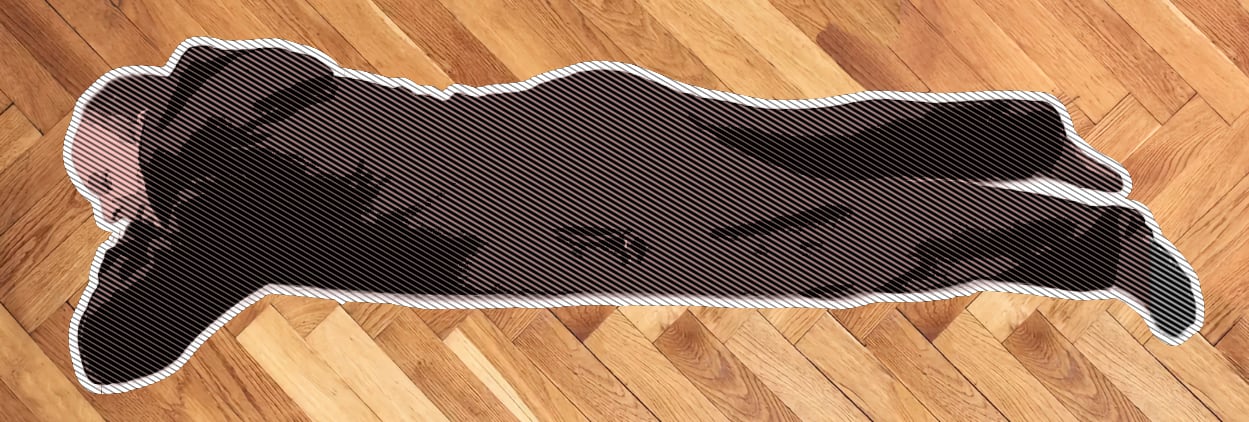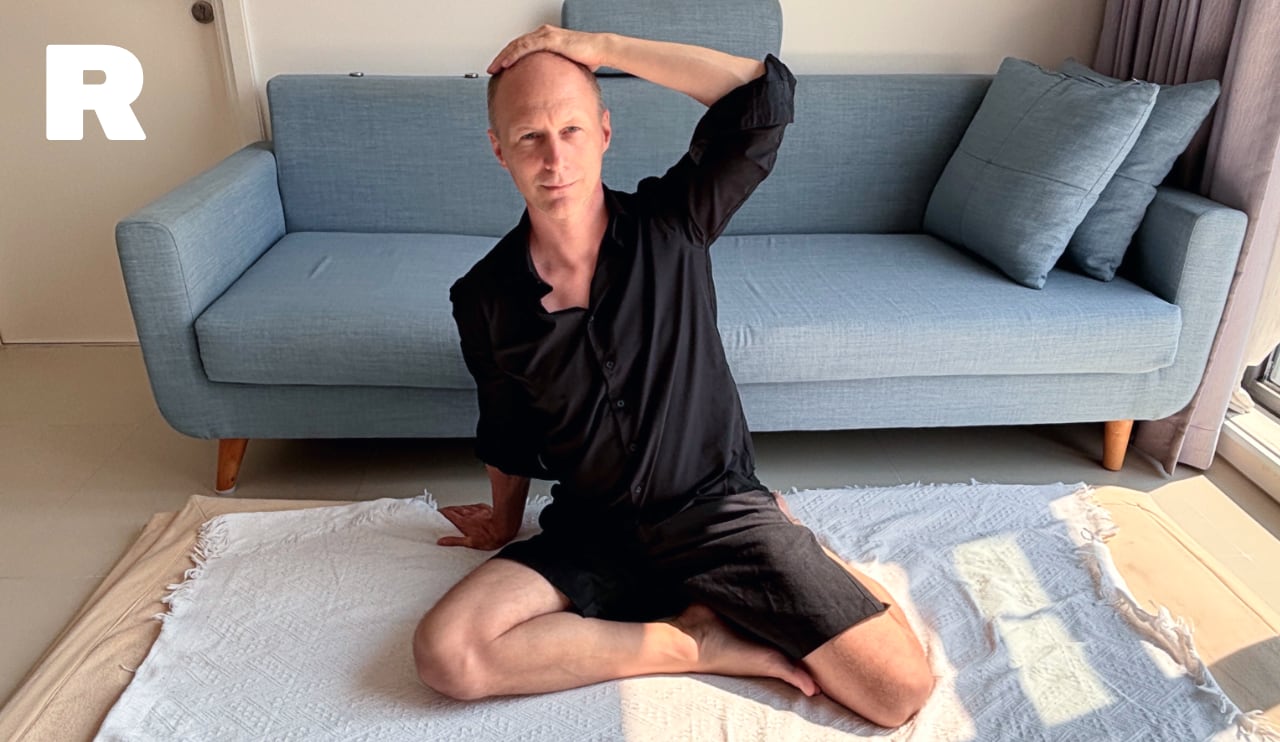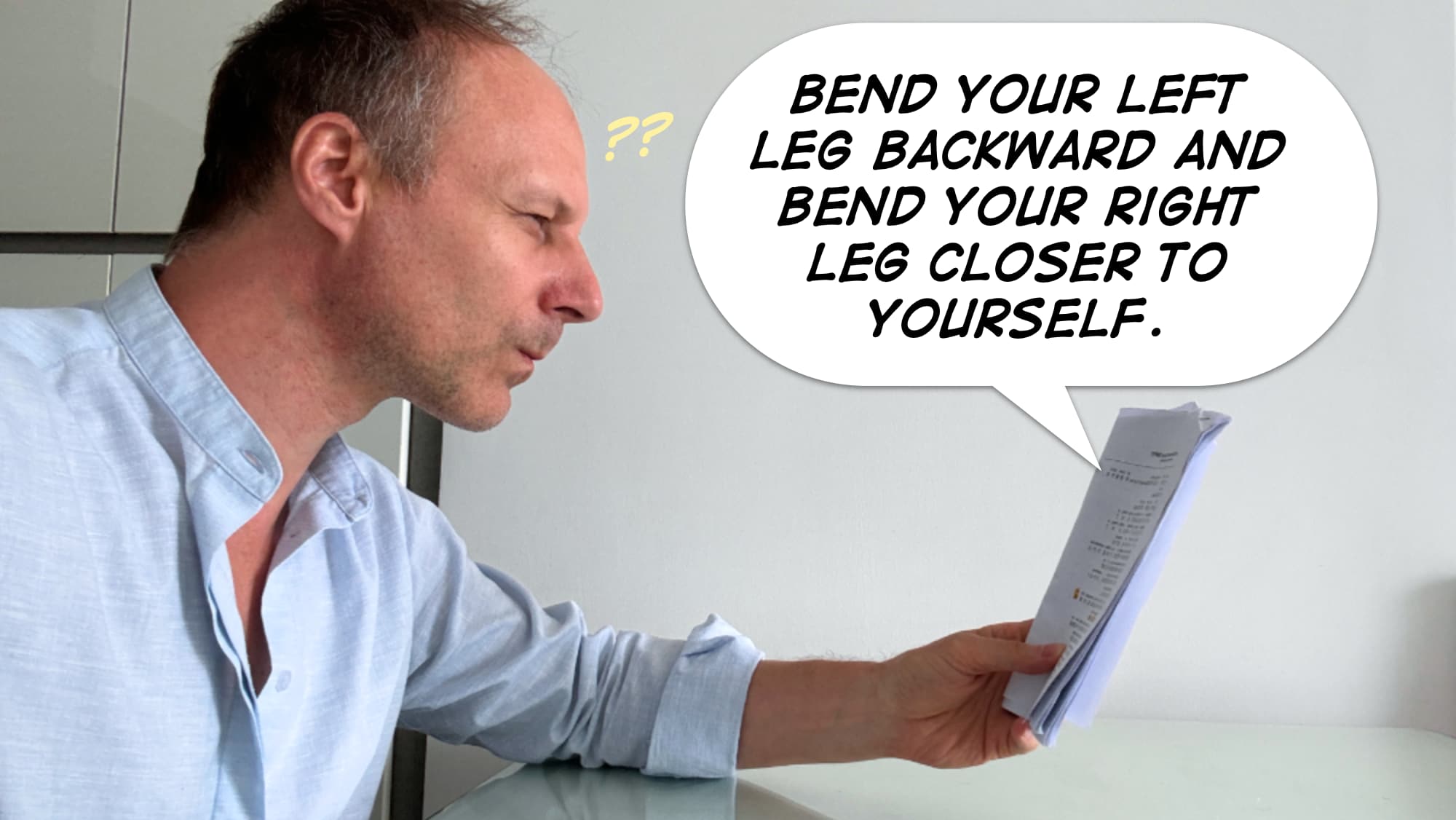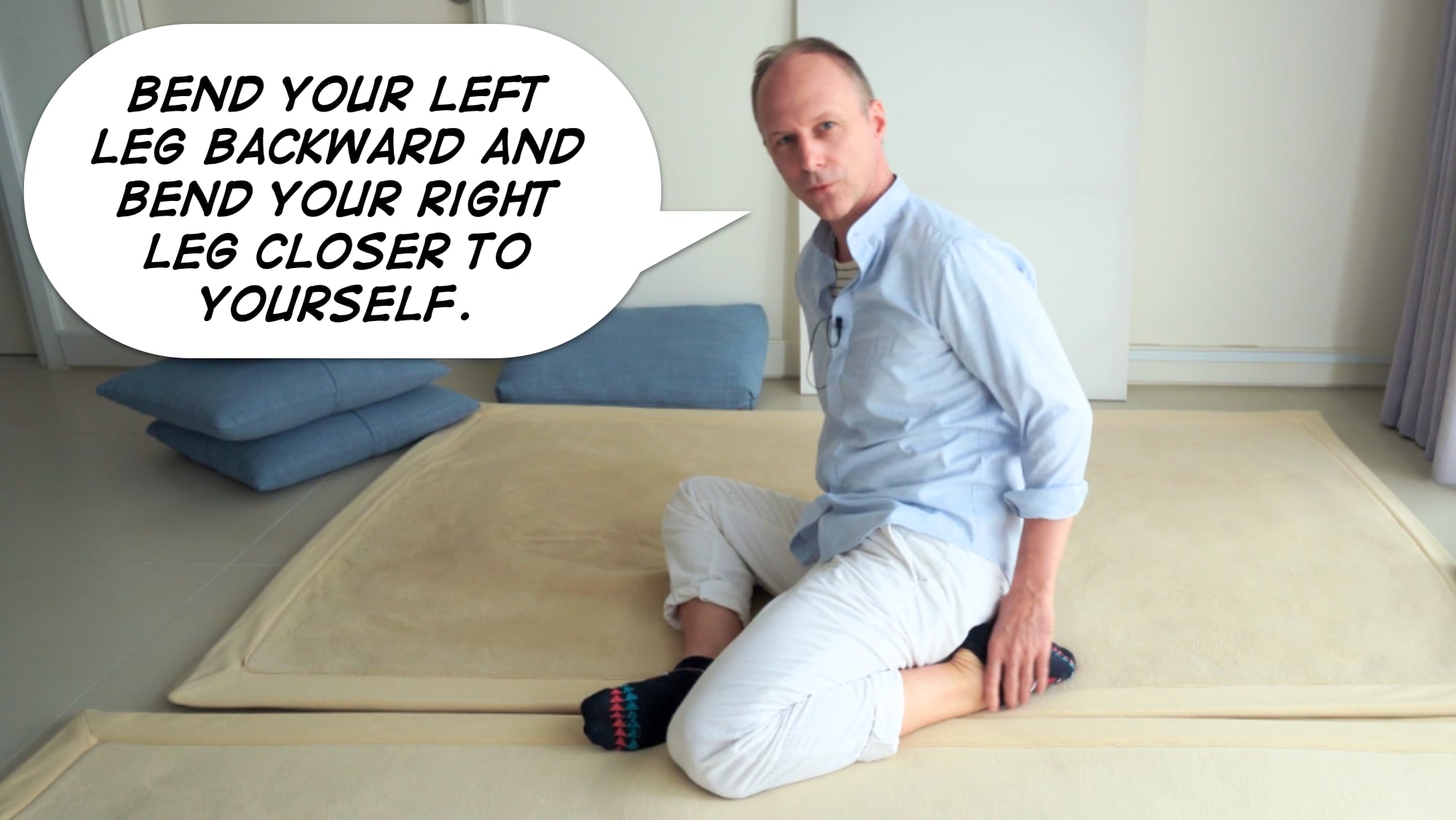A blog post about teaching. An exercise to relief tension in your neck and chest, a moment to improve your coordination, to fine-tune your motor-control, to raise your embodied awareness. A liberating movement meditation, if you will, in which you learn, observe, feel comfortable and are at peace.
To do so, consider the following movement: a little bit of sliding of the head to the left and back again. In the following starting position, in the style of a Somatics (or Feldenkrais) class:

Describe the starting position
- You’re lying on your belly,
- with one hand on top of the other.
- Your head is resting on your hands
- and your head is turned to the left.
Instruct the movement:
- Slide your head to the left,
- and back again.
Point out which movement options you want to exclude, and what to do instead:
- Don’t slide your arms to the left, slide your head.
- The hands stay where they are, it’s your head that’s moving.
- Don’t roll your head, don’t put your forehead on your hands. Keep your head turned to the left, keep your nose pointing to the left.
Give alternative instructions for the same movement:
- Your nose is moving closer to your left elbow,
- and further away again.
Describe the quality of how to move:
- Lift your head only a little bit, just enough to allow it to slide.
- Don’t effort yourself, make light movements.
- Move slowly, so that you can observe the smallest details and connections.
- Don’t clench your jaw and don’t hold your breath while you’re moving.
Suggestions: Is it safe, is it comfortable?
- Take rests in between each movement.
- After each movement check in and observe: did you effort? Was there any unintended stressor that you don’t need, that you can let go of?
Tactile cues, describe how the movement connects to other areas of the body:
- You might notice that your shoulders want to move, rotate, lift, and lower. Allow that to happen.
- Allow your chest to side-bend, rotate, twist, naturally.
- You might even observe your pelvis rolling, or your legs moving.
Follow up movements to turn this into a stronger lesson might be for differentiation, refinement or amplification, for example: move the head together with the hands, or arrest the head and only move the hands/elbows/arms, or do the same with the chest and pelvis in relation to the head and arms.
However, I mainly wrote this blog post for the last part, the tactile cues. It seems like this exercise is a movement of the head, therefore, all the movement might be performed with the neck, while buttressing and stiffening the chest. In fact, the breathing might be obstructed, the jaw clenched… all in order to move the head.
How surprising it will be to discover that in this particular situation, in this exercise setup, the chest can let go, and the shoulders might move! The hands stay in place, but the shoulders roll, rotate, twist, lift and lower; the shoulder-blades slide. Would you have discovered that on your own? Isn’t such a little tactile remark by the teacher, such a clue, just wonderful? Almost like a revelation?
It’s like stepping outside into the green after months (or years, decades maybe) of lockdown. Which might be quite emotional, especially if you didn’t even know why your chest was held arrested in such a stiff fashion, and you could have just moved and breathed freely instead. Liberation at last. Tears might roll!




